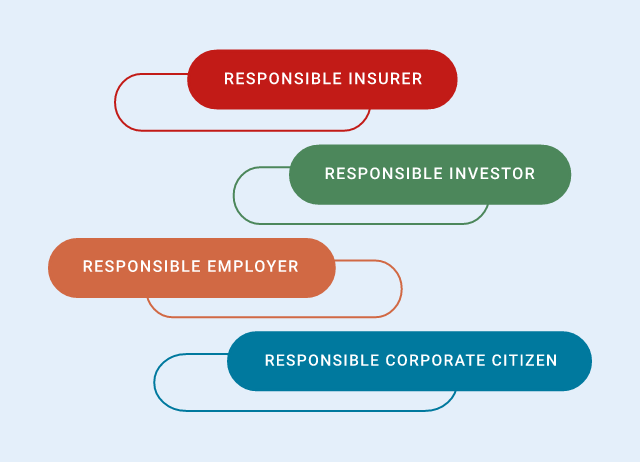Crisis management
This section is dedicated to share some key elements related to the Crisis Management Model that Generali has defined and implemented in order to increase its resilience.
According to the Crisis Management Model, different organization responsibilities are involved at an operational, coordination and a strategic level; the Model has been implemented not only at Group level, but also for Assicurazioni Generali and for the related Legal Entities.
The sections below contain some detailed information about the main topics.
The Corporate Security team developed guidelines for an effective crisis response
The Covid-19 emergency created new and tough challenges, and even more proof that adequate preparation is key to deploy an effective and efficient response to address new crises.
Crises are identified with conditions of instability that cause major changes and that require attention as well as immediate action to protect people, goods, assets and the environment.
For this reason, over the last year, the Corporate Security team developed a project to define a Crisis Management Model for Assicurazioni Generali, aiming to:
- Detect, identify and classify all kinds of events (on the basis of an Event Taxonomy) through approaches and methodologies that are shared within the Group;
- Counter, manage and mitigate emergences and crises that might pose threats to business and people;
- Maximise cooperation and coordination at the top management level, supporting the identification of strategies, communications and extraordinary expenses that are needed to address the emergency;
- Guarantee a quick and effective response to potentially threatening events, keeping applicable rules in due consideration.
The roles and responsibilities in crisis management
The Model provides three different roles, activated in consideration of the occurred event criticality and classification level. The roles include:
- Operational / Impacted Functions and Event Reporter: in the Operational Level of the Model, the Event Reporter (internal and external personnel of Assicurazioni Generali) and the Operational / Impacted Functions are responsible for identifying possible critical events.
- Crisis Response Team - CRT: in the Coordination Level of the Model, the Crisis Response Team is represented by specialists from the different functions engaged in the management of critical events. The Crisis Response Team is in charge for managing events classified with at least a High criticality level, and for supporting the coordination between the Strategic and Operational Level.
- Crisis Committee: in the Strategic Level of the Model, the Crisis Committee composed of Top Management acts in the occurrence of events classified with a Very High level of criticality in order to support the identification of strategies, extraordinary expenses and communications useful to overcome the crisis.
Events Taxonomy and Classification
Within the model, a taxonomy of potentially critical events and a classification scale of their severity is provided.
1. Events taxonomy
The Model is activated if the occurred or potential event is listed within the Event Taxonomy. The Taxonomy includes different families and, for each family, the different type of events and the relative contacts.
2. Classification matrix
To identify the severity and to ensure the activation of the correct responsibility level (Operational, Coordination, Strategic), all the detected events must be analyzed and classified. For that reason, in accordance with the Group Classification Matrix, all Events must be classified based on the five criticality levels described below:
1. Very Low: events that do not expose AG or its Branches to impacts;
2. Low: non-critical anomalies which, although causing partial or temporary malfunctions, do not expose AG or its Branches to impacts;
3. Medium: incidents which, while not causing an immediate damage, may expose AG or its Branches to potential impacts, requiring constant monitoring;
4. High: serious incidents or emergencies that cause serious impacts on AG or its Branches, and for which it is necessary to provide for recovery actions;
5. Very High: crisis, which represents the maximum severity level of anomalous Events and is characterized by serious long-term impacts on AG or its Branches.


